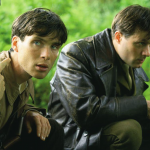🎬The Thin Red Line (1998): A Poetic Meditation on War and Humanity
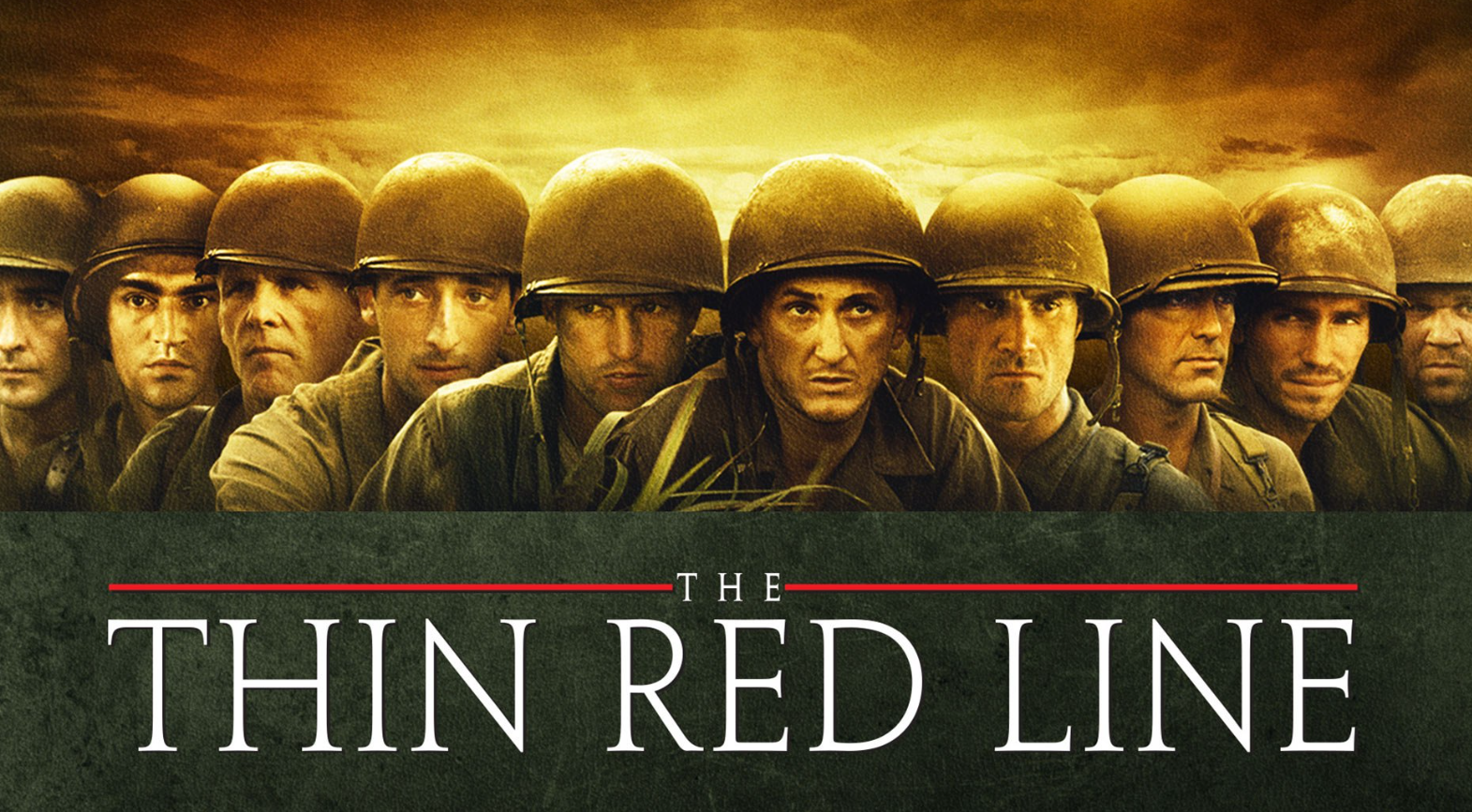
Director: Terrence Malick
Main Cast: Sean Penn, Jim Caviezel, Nick Nolte, Elias Koteas, Ben Chaplin
Genre: War, Drama
Release Date: December 25, 1998
Runtime: 170 minutes
Plot Overview:
The Thin Red Line is a haunting and philosophical exploration of war, set during the Battle of Guadalcanal in World War II. The film follows a group of American soldiers as they engage in a brutal struggle for control of the island. However, unlike traditional war films, The Thin Red Line focuses less on the combat itself and more on the internal experiences of the soldiers—examining the emotional, psychological, and spiritual toll of warfare. As the soldiers confront the horrors of battle, they are also grappling with their sense of mortality, the nature of good and evil, and their place in the universe.
What to Expect:
- Philosophical Depth:
- The Thin Red Line is not a conventional war movie. It delves deeply into philosophical questions about life, death, nature, and humanity’s place in the world. The film’s voiceovers from multiple characters offer profound reflections on war and existence, giving the narrative a contemplative and poetic tone.
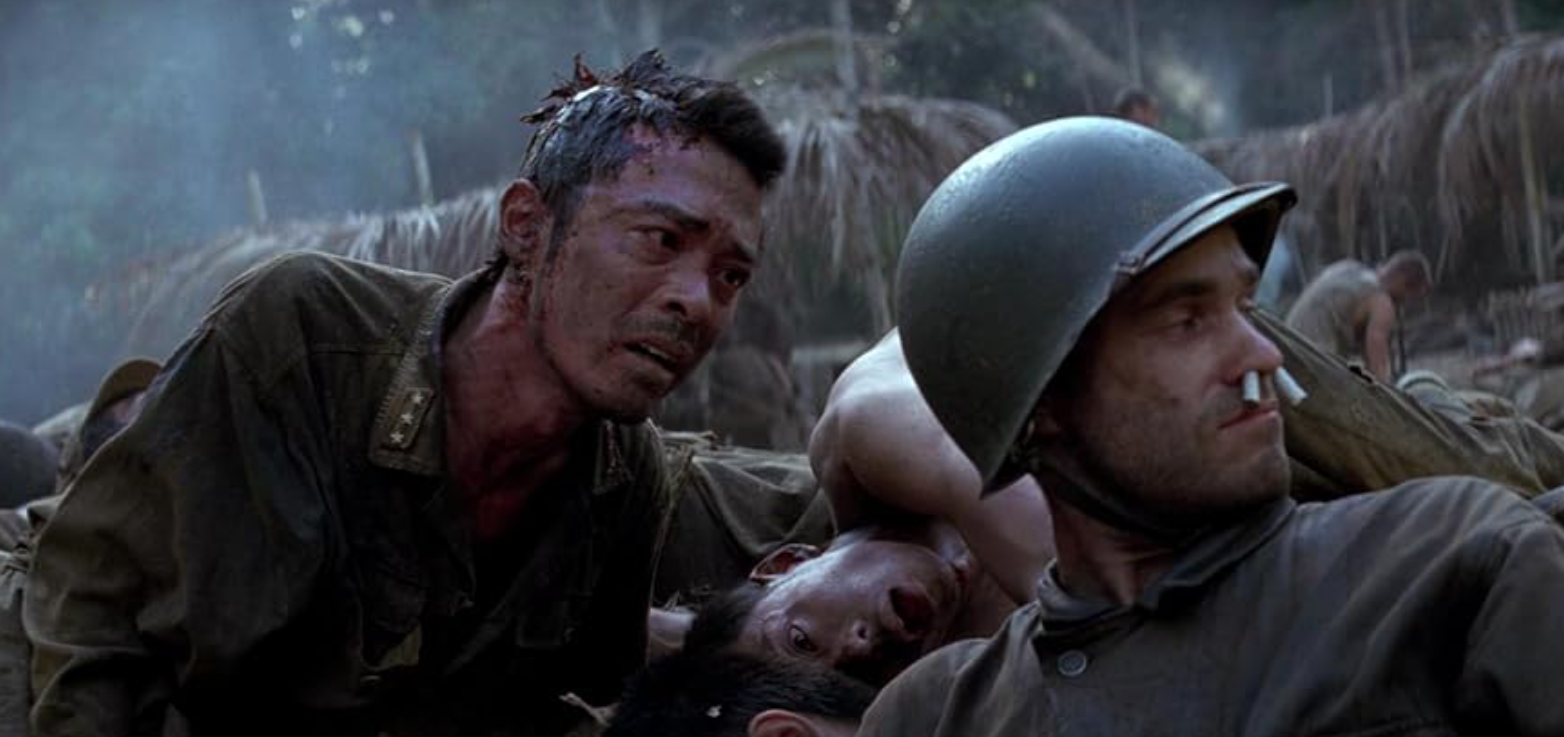
- Cinematic Visuals:
- Directed by Terrence Malick, the film is renowned for its breathtaking cinematography. The lush, verdant landscapes of the Pacific island serve as a stark contrast to the violence and chaos of war. The imagery of nature plays a central role in the film, symbolizing both the beauty and indifference of the world to human suffering.
- Ensemble Cast:
- The film boasts a star-studded ensemble cast, featuring Sean Penn, Jim Caviezel, Nick Nolte, and Elias Koteas, among others. Each actor delivers a nuanced performance, portraying soldiers from different walks of life, all struggling with their own inner demons as they face the external horrors of war.
- Psychological Complexity:
- Rather than glorifying heroism or focusing on the physical combat of war, The Thin Red Line explores the psychological effects of battle. It highlights the fears, anxieties, and moral dilemmas of soldiers, making their inner turmoil as important as the external conflict.
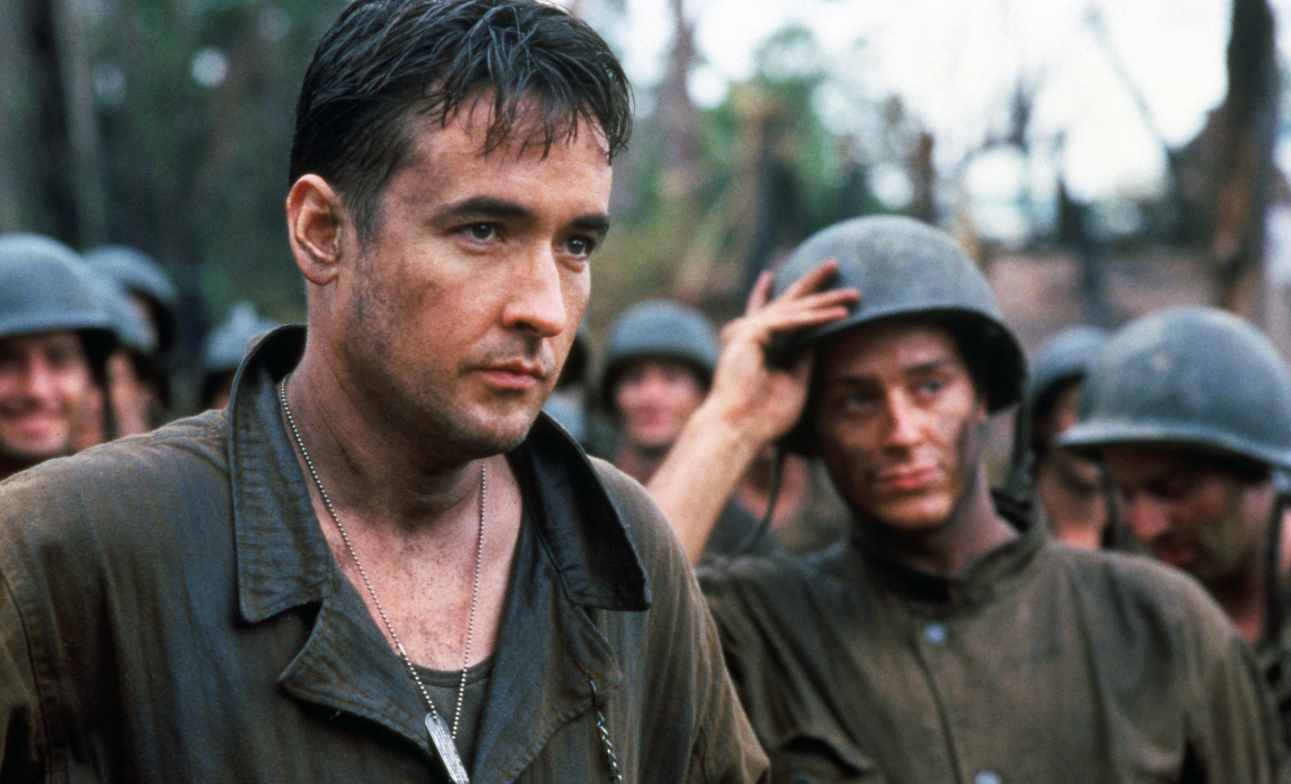
- Non-Linear Storytelling:
- True to Terrence Malick’s style, the film features a non-traditional narrative structure. The storyline weaves in and out of different perspectives, blurring the lines between memory, present experience, and philosophical musings. This unconventional approach gives the film an ethereal quality, immersing viewers in the characters’ emotional landscapes.
Cinematic Techniques:
- Lush Cinematography:
- Cinematographer John Toll captures the beauty of the Pacific island with sweeping shots of jungles, rivers, and skies, juxtaposing the tranquility of nature with the violence of war. These visuals add an almost dreamlike quality to the film, reflecting the internal struggles of the soldiers.
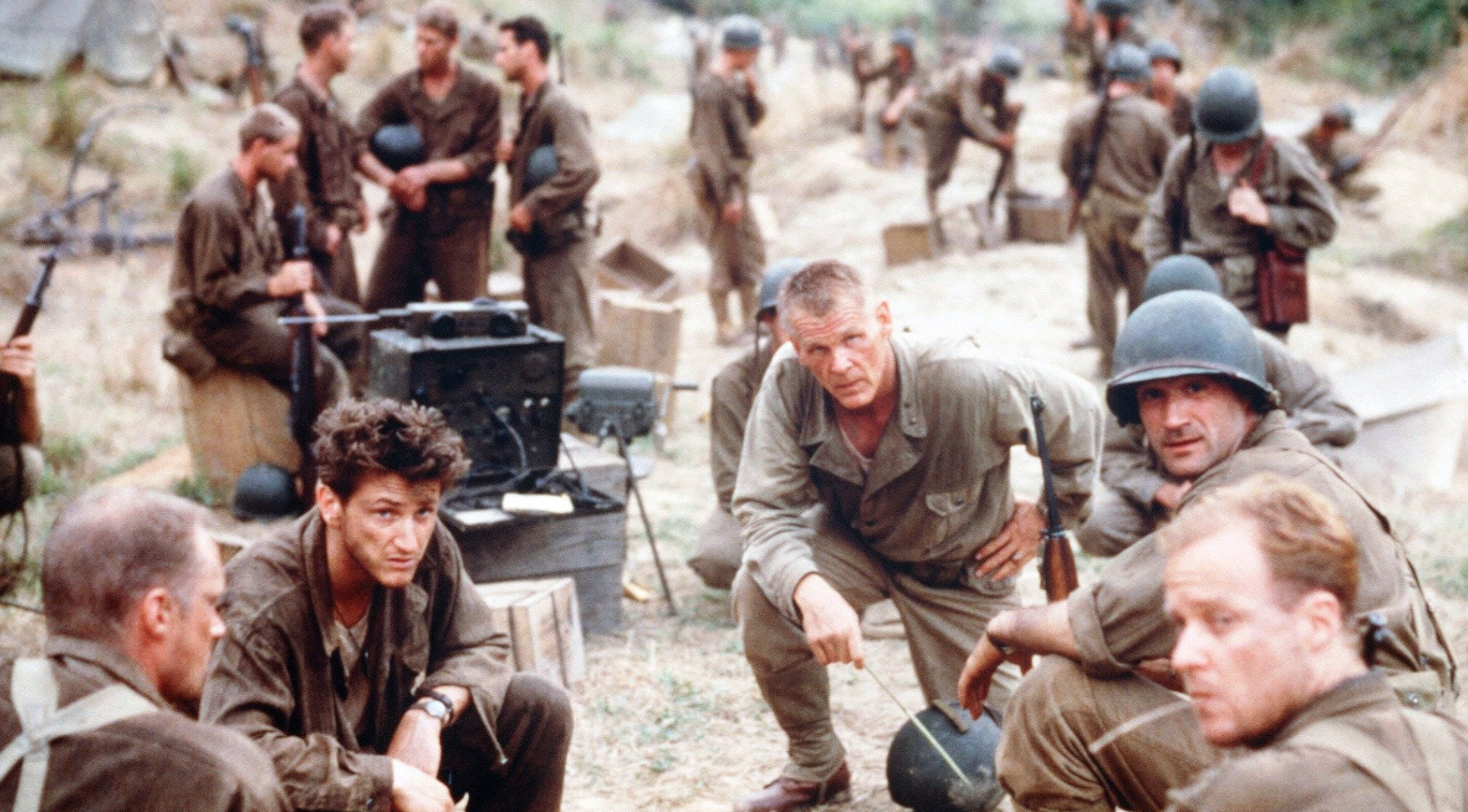
- Sound Design and Music:
- The film’s soundscape, featuring minimal dialogue and long stretches of silence, creates a meditative atmosphere. The score, composed by Hans Zimmer, is subtle and haunting, underscoring the emotional weight of the film without overpowering the visuals or themes.
- Naturalistic Direction:
- Malick’s signature use of natural lighting and spontaneous, almost documentary-like camera work immerses the audience in the moment. The close-up shots of soldiers, often framed against the vastness of nature, highlight their vulnerability and isolation.
Legacy and Impact:
- Critical Acclaim:
- The Thin Red Line was met with widespread critical acclaim, earning seven Academy Award nominations, including Best Picture and Best Director. While it did not win any Oscars, the film has since become regarded as one of the most profound and visually stunning war films ever made.
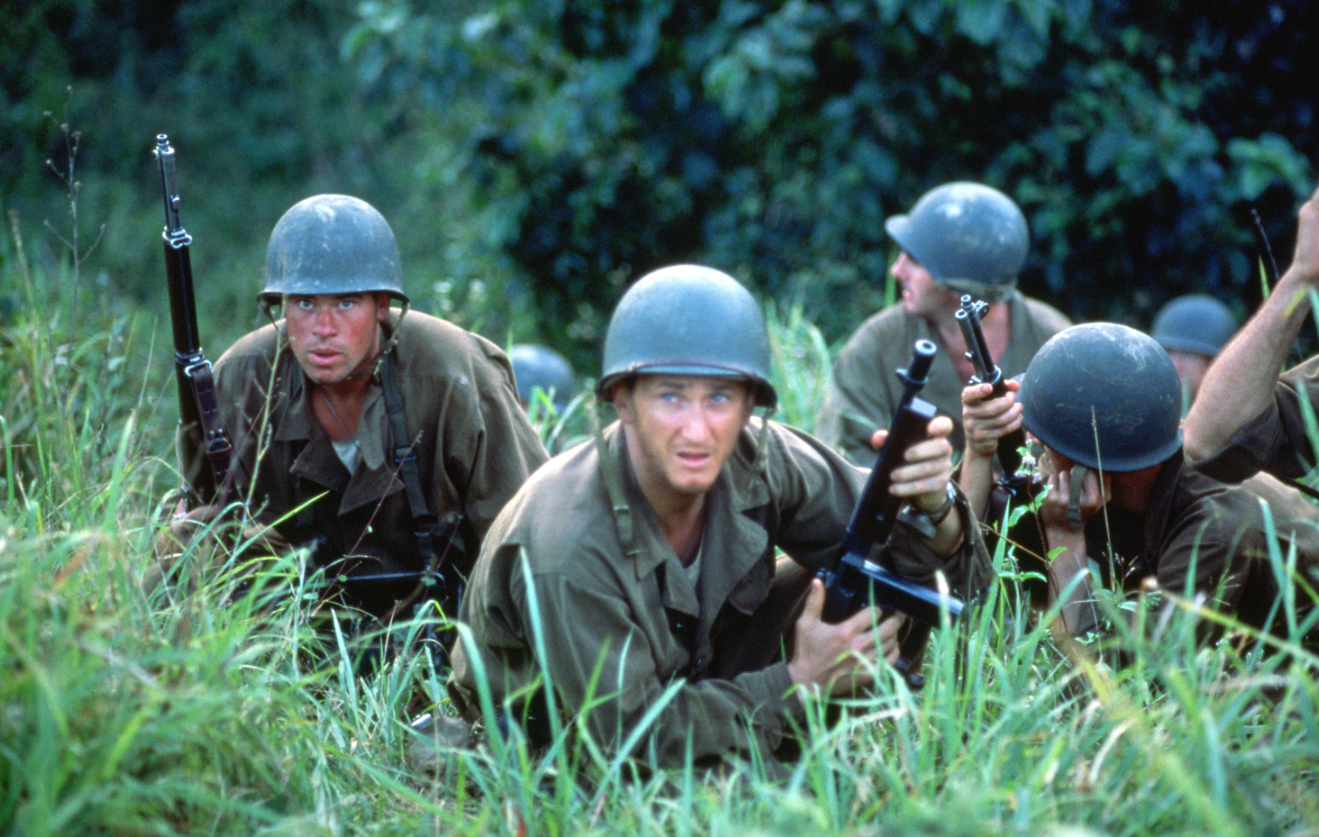
- A Unique War Film:
- Terrence Malick’s approach to the war genre is entirely different from more conventional films like Saving Private Ryan (released the same year). By focusing on the inner lives of soldiers and philosophical questions, The Thin Red Line carved out its own place in the genre, offering a deeply introspective take on the nature of conflict.
- Cultural Impact:
- The film has influenced many directors and filmmakers with its meditative style and poetic storytelling. Its philosophical exploration of war and humanity resonates far beyond the battlefield, raising universal questions that continue to be discussed by audiences and critics alike.
Conclusion:
The Thin Red Line is an unforgettable cinematic experience that transcends the traditional war film genre. With its philosophical reflections, stunning visuals, and focus on the emotional and spiritual journeys of its characters, the film offers a deeply contemplative look at the human experience in the face of violence and chaos. For viewers seeking a thoughtful, visually beautiful exploration of war and its existential implications, The Thin Red Line is an essential watch.
Suggested videos for you:
Suggested videos for you:
Suggested videos for you:
Suggested videos for you:
Suggested videos for you:
@licktowing11 Venom vs. Carnage – The Full Fight Scene! Venom 2 Let There Be Carnage #movie #highlights #moivehighlights #venom #acitonmoive
Suggested videos for you:
@lovrstify99 It’s a pivotal moment that showcases the dangers they face in their quest.
Suggested videos for you:
@licktowing11 Venom vs. Carnage – The Full Fight Scene! Venom 2 Let There Be Carnage #movie #highlights #moivehighlights #venom #acitonmoive
Suggested videos for you:
@licktowing11 Transformers The Last Knight (2017) #movie #moviehighlights #highlights #tranformers




